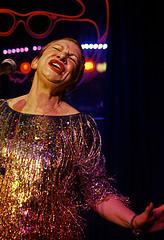 1 INTRODUCTION It is intended with this work, to study the main methods and used techniques of learning in the education of the carriers of auditory deficiency, as well as analyzing the options that educating makes use to make possible and to facilitate the learning of these deficient ones in Brazil. Had the certain degree of unfamiliarity it enters the professionals of the education with regard to this deficiency, was thought about carrying through a bibliographical study of form who if reach the excessively interested professionals who act in the education area and. The idea is the knowledge of methods and techniques, including the technologies favorable to this type of lack, so that they facilitate the learning of deficient the auditory ones, as well as knowing the types and levels of deafness of such deficient ones, and thus, detaching the alternatives that the professor makes use to work with them (carrying of auditory deficiency) ' ' The central question is to find a way of communication with the deaf person. The auditory canal it is insufficient or impracticable. It is necessary, therefore to meet ' ' paliativos' ' to this lack. This constitutes the first objective of the education of the deaf person. A choice of the ways is directly on to an underlying theoretical option, either this clearly express or no.' ' (Kozlowsky, 2000: p.2) The challenge is that an education directed toward the future is developed where the necessities of an interaction and inclusion with the different one are inserted in our realities, thus being, needs to develop abilities and to create ways so that the learning process also reaches these carriers of deficiency in such way that, the gaps are all filled of form to take care of to this public who is each almejante time of its rights. The fonolgica necessity if makes gift in the alfabetizao of these children so that they construct relations between visemas and its interaction with the way that is inserted either complete
1 INTRODUCTION It is intended with this work, to study the main methods and used techniques of learning in the education of the carriers of auditory deficiency, as well as analyzing the options that educating makes use to make possible and to facilitate the learning of these deficient ones in Brazil. Had the certain degree of unfamiliarity it enters the professionals of the education with regard to this deficiency, was thought about carrying through a bibliographical study of form who if reach the excessively interested professionals who act in the education area and. The idea is the knowledge of methods and techniques, including the technologies favorable to this type of lack, so that they facilitate the learning of deficient the auditory ones, as well as knowing the types and levels of deafness of such deficient ones, and thus, detaching the alternatives that the professor makes use to work with them (carrying of auditory deficiency) ' ' The central question is to find a way of communication with the deaf person. The auditory canal it is insufficient or impracticable. It is necessary, therefore to meet ' ' paliativos' ' to this lack. This constitutes the first objective of the education of the deaf person. A choice of the ways is directly on to an underlying theoretical option, either this clearly express or no.' ' (Kozlowsky, 2000: p.2) The challenge is that an education directed toward the future is developed where the necessities of an interaction and inclusion with the different one are inserted in our realities, thus being, needs to develop abilities and to create ways so that the learning process also reaches these carriers of deficiency in such way that, the gaps are all filled of form to take care of to this public who is each almejante time of its rights. The fonolgica necessity if makes gift in the alfabetizao of these children so that they construct relations between visemas and its interaction with the way that is inserted either complete